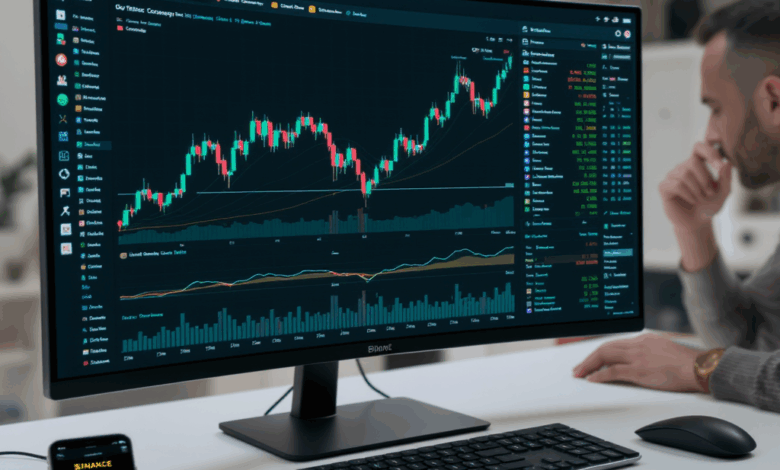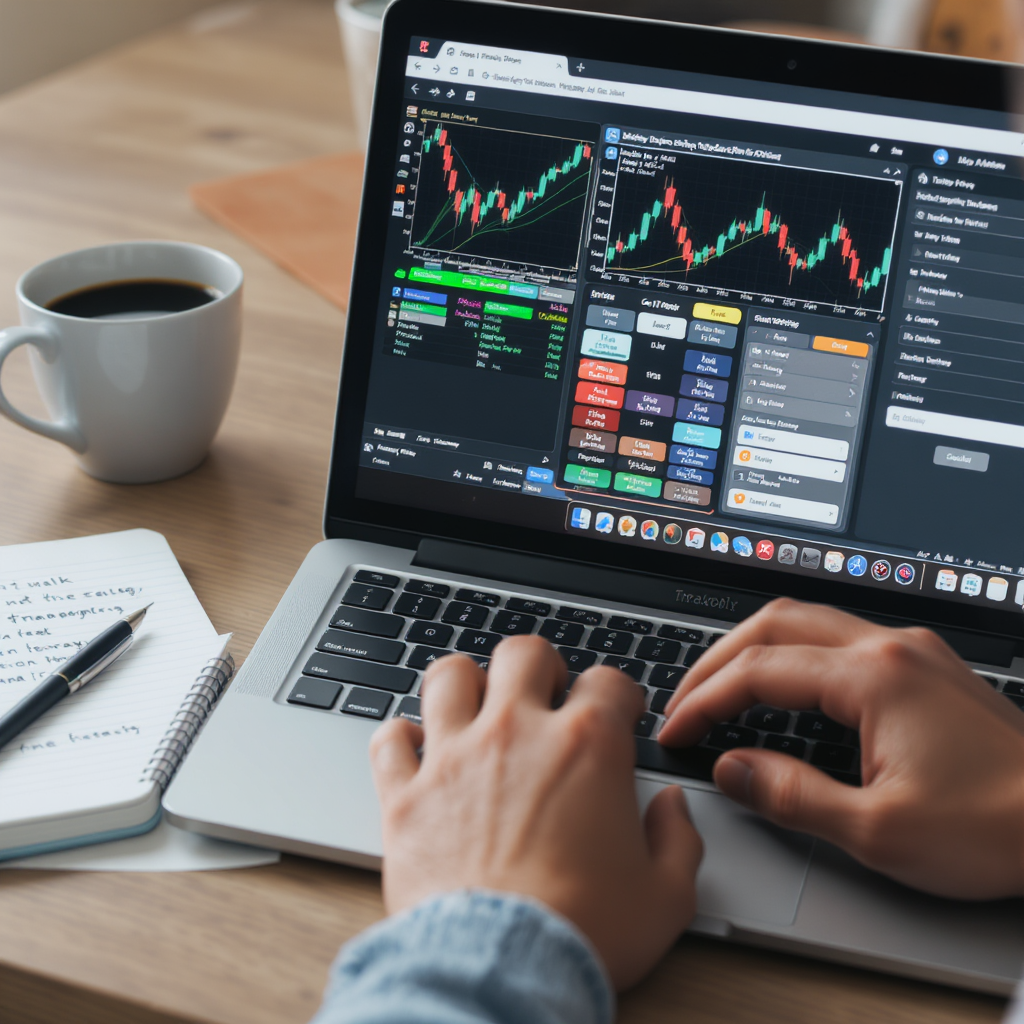Navigating the Crypto Waters – Your Beginner’s Guide to Setting Up a Trading Bot

Preparing for Your Crypto Trading Bot Journey
Before we jump into the nitty-gritty of setting up a trading bot, it’s crucial to lay the groundwork. Think of this stage as gathering your tools before you start building. Here’s what you need to consider:
1. Prerequisites Check
- Basic Understanding of Cryptocurrency: Familiarize yourself with crypto basics—what it is, how it works, and the different types of currencies available.
- Account on a Crypto Exchange: Make sure you have an account with a reputable exchange like Binance or Coinbase Pro, as you’ll need this to deploy your bot.
- API Key: Obtain your API key from your exchange, which will allow your bot to access your trading account securely.
- Risk Management Plan: Define your risk tolerance and trading goals to guide your bot’s strategy.
2. Tool and Resource Requirements
- Trading Bot Software: Choose user-friendly platforms that offer drag-and-drop interfaces or pre-built strategies. Some popular options include:
- 3Commas: Known for its simplicity and effectiveness.
- Cryptohopper: Offers a wide range of strategies and user support.
- Programming Language (Optional): If you want to customize your bot, Python is highly recommended due to its simplicity and vast libraries.
Building Your Crypto Trading Bot
Now that we’ve set the stage, let’s get into the actual setup process. This is where the magic happens!
1. Define Your Trading Strategy
- Choose Your Approach: Decide on your trading strategy, such as:
- Trend Following: Capitalizing on upward or downward trends.
- Arbitrage: Exploiting price discrepancies across exchanges.
- Mean Reversion: Betting on price reversals to average out.
- Set Parameters: Determine your entry and exit points, as well as stop-loss levels to minimize risks.
2. Select and Configure the Bot
- Choose Your Bot: Depending on your comfort level, select a pre-built trading bot or opt for one that allows customization.
- Input Your API Key: Safely input your API key into the bot’s settings to enable it to execute trades on your behalf.
- Adjust Settings: Tailor the bot settings to align with your previously defined trading strategy and risk management plan.
3. Backtesting Your Strategy
- Simulate Trading: Before deploying your bot with real funds, run simulations using historical data to see how your strategy performs.
- Analyze Results: Look at the performance metrics—did it make profits? Adjust your strategy based on these findings.
4. Paper Trading
- Practice Without Risk: Engage in paper trading, where the bot executes trades using virtual money. This allows you to refine your strategy in real-time without the financial risk.
- Monitor Performance: Keep an eye on how the bot reacts to current market conditions and make necessary tweaks.
Verification and Monitoring
Once your bot is live, it’s vital to ensure everything is functioning correctly and efficiently.
1. Continuous Monitoring
- Check Performance Regularly: Look at your bot’s performance daily or weekly. Ensure it adheres to your strategy and isn’t making unexpected trades.
- Adjust Settings: Be prepared to tweak settings based on market conditions or if the bot isn’t performing as expected.
2. Troubleshooting Common Issues
- Error Messages: If your bot encounters an error, consult the platform’s help resources or community forums for solutions.
- Security Measures: Ensure your API keys are kept secure, and consider enabling two-factor authentication for added security.
3. Success Verification
- Review Profit and Loss Statements: Regularly check your overall performance. Are you meeting your trading goals? If not, reassess your strategy.
- Stay Updated: Keep up-to-date with market trends and news that could impact your trading strategy.
Setting up a crypto trading bot may seem daunting at first, but by following these steps, you can take confident strides into the world of automated trading. Remember, the journey doesn’t end here—continue learning, adjusting, and growing as you navigate the ever-evolving landscape of cryptocurrency trading.
Advanced Configuration Techniques for Crypto Trading Bots
As you become more comfortable with your crypto trading bot, it’s essential to explore advanced configurations that can enhance its performance and adaptability. In this section, we’ll delve into various sophisticated settings and customizations that can elevate your trading strategy.
1. Dynamic Position Sizing
Adjusting Trade Size Based on Market Conditions
Even the best trading strategy can falter if the position sizes are static. Dynamic position sizing allows you to adjust how much capital your bot allocates to each trade based on several variables, such as market volatility or your current portfolio performance.
– Implementation Steps:
1. Define Your Risk Tolerance: Determine how much of your portfolio you’re willing to risk on a single trade (e.g., 1-2%).
2. Calculate Position Size: Use the formula:
[ \text{Position Size} = \frac{\text{Account Equity} \times \text{Risk}}{\text{Stop-Loss Distance}} ]
3. Incorporate Market Volatility: Adjust the risk percentage based on the Average True Range (ATR) of the asset to adapt to market conditions.
2. Multi-Strategy Approach
Combining Different Trading Strategies
Employing a multi-strategy approach can diversify your trading and reduce risks associated with relying on a single strategy. Here’s how you can set it up:
– Implementation Steps:
1. Identify Complementary Strategies: Choose strategies that perform well under different market conditions (e.g., trend-following, mean reversion, and arbitrage).
2. Set Criteria for Each Strategy: Define specific market conditions for each strategy to activate (e.g., specific price movements or indicators).
3. Allocate Capital Accordingly: Distribute your capital across these strategies based on their historical performance and current market relevance.
3. Advanced Technical Indicators
Utilizing Complex Indicators for Better Decision Making
While basic indicators like moving averages are valuable, advanced indicators can provide deeper insights into market behavior. Incorporating these can help refine your trading decisions.
– Implementation Steps:
1. Select Advanced Indicators: Consider indicators like the Ichimoku Cloud, Relative Strength Index (RSI) in combination with Bollinger Bands, or Fibonacci retracement levels.
2. Backtest Your Indicators: Use historical data to evaluate how these indicators would have performed in past market scenarios.
3. Integrate Indicators into Your Bot: Adjust your bot’s algorithm to use these indicators for entry and exit signals.
Optimization Techniques for Enhanced Bot Performance
After setting up your trading bot with advanced configurations, the next step is to optimize its performance. Optimization focuses on refining your strategy to maximize returns while minimizing risks.
1. Parameter Optimization
Fine-Tuning Your Trading Parameters
The parameters you set in your trading bot can significantly influence its performance. Parameter optimization involves adjusting these settings to find the most effective combinations.
– Implementation Steps:
1. Define Key Parameters: Identify the parameters to optimize (e.g., moving average periods, stop-loss limits, and trade frequency).
2. Use Optimization Software: Many trading platforms offer built-in optimization tools that can run simulations across a range of parameter values.
3. Analyze the Results: Evaluate the optimized parameters based on performance metrics like Sharpe ratio, maximum drawdown, and win rate.
2. Machine Learning Integration
Leveraging AI for Predictive Analytics
Incorporating machine learning algorithms can help your bot to learn from historical data and improve its trading strategies over time.
– Implementation Steps:
1. Gather Historical Data: Collect extensive historical price data and trading volumes for the assets you wish to trade.
2. Choose a Machine Learning Model: Select models like Decision Trees or Neural Networks that can analyze data patterns.
3. Train and Test the Model: Use a portion of your historical data to train the model and a separate portion to test its predictive accuracy.
3. Continuous Performance Monitoring
Real-Time Adjustments Based on Market Changes
Monitoring your bot’s performance in real-time allows for immediate adjustments to ensure it remains effective as market conditions evolve.
– Implementation Steps:
1. Set Alerts for Key Metrics: Create alerts for parameters like drawdown limits, win rates, and volatility indicators.
2. Regular Review Sessions: Schedule regular intervals (e.g., weekly or monthly) to review performance and adjust strategies as necessary.
3. Implement Auto-Adjust Features: Consider programming your bot to automatically adjust its strategies based on real-time performance metrics.
Expert Troubleshooting for Crypto Trading Bots
Even the most advanced trading bots can encounter issues that may hinder their performance. This section addresses common problems and solutions to ensure smooth operation.
1. API Connection Issues
Resolving Connectivity Problems with Exchanges
API connection issues can prevent your bot from executing trades, significantly impacting your performance. Here’s how to troubleshoot:
– Implementation Steps:
1. Check API Keys: Ensure that your API keys are correctly configured and have the necessary permissions.
2. Monitor Exchange Status: Use platforms like CoinAPI or the exchange’s status page to check for outages or maintenance.
3. Implement Reconnection Logic: Program your bot to automatically attempt reconnection after a failed connection.
2. Unexpected Trading Behavior
Identifying and Correcting Anomalies in Trading Activity
Sometimes, your bot may execute trades that seem irrational. Identifying the cause is crucial.
– Implementation Steps:
1. Log All Trading Activity: Maintain comprehensive logs of all trades executed, including the parameters used.
2. Analyze Trading Patterns: Review the logs to identify patterns leading to unexpected trades.
3. Adjust Algorithms: Based on your analysis, modify the algorithms to reduce occurrences of irrational trades.
3. Performance Deterioration
Addressing Declining Profitability Over Time
If your bot’s profitability begins to decline, it’s crucial to pinpoint the causes and make necessary adjustments.
– Implementation Steps:
1. Evaluate Market Conditions: Analyze whether market changes have affected your strategies’ effectiveness.
2. Review Strategy Parameters: Consider if your trading parameters need adjustment to align with current market trends.
3. Backtest Adjustments: Before implementing changes, backtest any new strategies against historical data to validate their effectiveness.
By mastering these advanced configurations, optimization techniques, and troubleshooting methods, you can elevate your crypto trading bot from a basic tool to a sophisticated asset capable of navigating the complexities of the cryptocurrency market.

As we wrap up this exploration into the world of crypto trading bots, I can’t help but reflect on the journey we’ve taken together. Setting up your bot feels a bit like embarking on a new adventure—exciting yet daunting. Each step we discussed, from defining your trading strategy to troubleshooting potential pitfalls, is not just a checklist but an evolving process that mirrors our own uncertainties and aspirations in the trading realm.
But here’s the thing: this isn’t the end. You’ve planted the seeds for something that can grow and adapt, just like you. The cryptocurrency market is a living entity, constantly changing, and so should your approach. As you navigate this landscape, I encourage you to stay curious. Ask yourself not just how to optimize your bot today but what you can learn from it tomorrow. What new strategies might emerge as you refine your understanding? How can you leverage the lessons from past trades to inform future decisions?
So, as you venture forth, I leave you with this thought: In the world of automated trading, it’s not just about the profits or losses; it’s about the insights you gain along the way. What will your bot teach you about the market—and about yourself? Keep questioning, keep evolving, and remember that every trade, successful or not, is a step toward mastering the art of trading. Happy trading!





